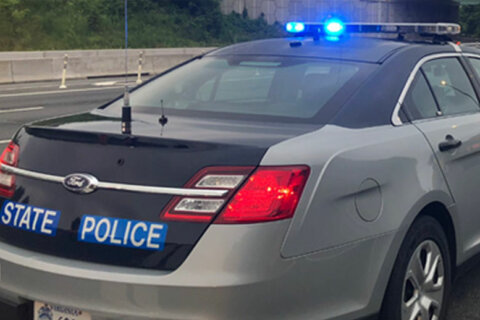This article was republished with permission from WTOP’s news partner InsideNoVa.com. Sign up for InsideNoVa.com’s free email subscription today.
This article was written by WTOP’s news partner InsideNoVa.com and republished with permission. Sign up for InsideNoVa.com’s free email subscription today.
Virginia’s Department of Rail and Public Transportation has thrown more cold water on an already frozen proposal to extend the Virginia Railway Express Manassas Line to Haymarket or Gainesville.
In a report to the General Assembly – requested by Del. Danica Roem (D-13th) – the department essentially says that the ridership payoff of running trains to Gainesville or Haymarket wouldn’t justify the capital cost of adding track to Norfolk Southern’s B-Line and building two or three new stations.
Roem, a longtime advocate of increased public transit options in western Prince William County who has called for expanded service beyond Manassas, requested the study despite VRE’s decision in 2017 to eschew extensions to Gainesville or Haymarket in favor of upgrades to its Broad Run station, which will allow for more trains and increased service along the Manassas Line.
According to DRPT Director Jennifer Mitchell, the recent study only confirms what VRE’s study of the expansion found years ago: At least for now, the extension doesn’t make financial sense. The department’s study found that with two new stations, extending VRE to Haymarket would cost $832 million to $915 million up front, while going to Gainesville would cost between $783 million and $865 million, depending on whether one or two Gainesville stations were built. By 2030, the expansions would boost Manassas Line ridership by only 7%.
“The capital costs that we’ve identified here are quite a bit higher than what was identified by the VRE and then the operating costs that we had estimated are a bit lower, but I think in general … if anything it somewhat validates the decision that was made early on to focus on the Broad Run extension,” Mitchell told the VRE operations board at its last meeting. “Hopefully the information is helpful in any future decision making about the possible extension.”
Mitchell and DRPT’s rail chief, Emily Stock, said that when they presented the study’s findings to Roem, she also expressed interest in examining ridership at a potential Innovation Park station. That alternative was not selected as a finalist for the VRE study years ago, according to Mitchell.
During the board meeting, Prince William Supervisor Jeanine Lawson, R-Brentsville District, told the DRPT officials that they should involve her in any future discussions of an Innovation Park station study, calling the western extension plans a “dead horse” for the time being.
“I think you’re wasting your time and I don’t want you to waste your time,” Lawson added.
Regional rail connectivity explored
In a separate discussion with rail advocates last week, VRE CEO Rich Dalton said infrastructure improvements coming down the pike as part of the $3.7 billion Transforming Rail in Virginia plan could open the door to a very different service extension into Maryland.
Speaking at a panel hosted by Virginians for High Speed Rail, Dalton said the increased capacity that will come with a new Long Bridge separating passenger and freight rail could allow for trips from Virginia, through the District of Columbia and into Maryland, without the need to change trains.
“We need time to build that out. … We need the next decade with the wind to our back to go out and actually execute some of these infrastructure programs and projects such that we can add those smart connections, those smart mobility options for this region,” Dalton told Danny Plaugher, director of Virginians for High Speed Rail.
The panel was focused on commuter rail in the region and also featured Joe McAndrew from the Greater Washington Partnership. In December, the partnership released its Capital Region Rail Vision calling for increased connectivity from Baltimore to Richmond and more commuter service between Maryland and Virginia, particularly as Amazon’s HQ2 is built in Crystal City and more transit connections are added to the area – a rebuilt Crystal City VRE is in the works for completion in 2024 with added capacity.
Because of some technical constraints, advocates for region-wide commuter rail service currently see more potential in expanding Maryland’s MARC commuter rail service into Virginia. But the Transforming Rail plan will eliminate at least some of the hurdles to sending VRE trains into Maryland. Ultimately, the Greater Washington Partnership’s vision is for bidirectional service to run all day, increasing access to jobs and affordable housing within the region.
Maryland is working on a pilot plan to send MARC trains into Virginia, but McAndrew said the region needs a body focused solely on coordinating transit projects and operations between the three jurisdictions.
“VRE is an excellent commuter rail service; MARC is a great commuter rail service,” McAndrew said. “We don’t have a very solid … entity to think about how we’re ever going to get to a more integrated system.”







